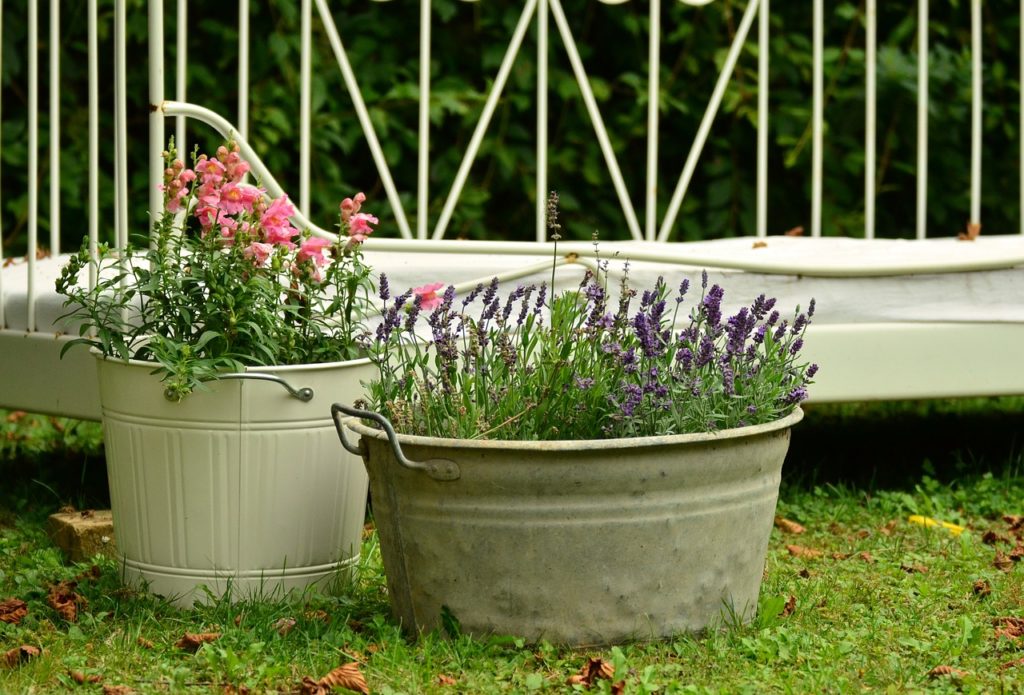Can you reuse potting soil?

The growing season is winding down, and soon, it will be time to put your garden beds to rest. If you are trying to save money on gardening supplies, you may already be thinking of ways to cut costs between seasons. As you stare down your fallow pots and container gardens, you may find yourself wondering, “Can you reuse potting soil from year to year?”
The short answer: mostly yes, but it depends on a few factors, including the health of your plants and the size of your pots.
“It depends on the size of your container as to whether it is really reasonable or not,” said Kate Garland, horticultural specialist at the University of Maine Cooperative Extension. “For medium to small containers, I would say compost it and start over again. When you pull out plants, the roots are attached to potting mix and it doesn’t make sense to try to shake it out.”
Larger containers are less likely to lose the bulk of their soil to roots. Besides, they are a more expensive to refill year after year. Garland said you can use the same potting soil as long as you refresh about one-tenth of the large containers with new potting mix.
“It just freshens things up, and most potting mixes have fertilizer in it that will give your plants a boost,” Garland explained.
Most potting soil mixes are compost-based, but Garland said you could also add straight compost mixed with perlite to provide nutrients and a loose, fluffy structure for roots to grow into.
Potting soil can be left outside during the winter as long as the containers can handle the cold.
“It’s not necessarily a concern for the potting mix — it’s a concern for the containers,” Garland said. “Water freezes, expands and cracks clay pots. Any clay pots, I would suggest storing indoors.”
Caveats to saving potting soil
If you reuse potting soil, avoid planting the same type of plant in the recycled soil year after year.
“You want to try to avoid diseases that are common to that particular crop that can be harbored in the soil from year to year,” Garland said. “The same crop is going to pull up the same cohort of nutrients every year, so you’re going to end up with pretty depleted soil, too.”
If you had problems with diseases in a container garden the previous season, no matter what size the container is, you want to replace the soil.
“If you have any diseased plants, you want to start fresh no matter what,” Garland said. “There are some diseases that may not survive in the soil if its kept outside, but it is not worth the gamble.”
The same goes for growths, particularly in high-moisture conditions like greenhouses.
“Sometimes, you get some growth on top of your potting mix, like moss or liverworts,” she said. “I would just start over again in that situation, too.”
Garland said she does not recommend pasteurizing your own potting mix to try and kill pathogens.
“It’s a slow, stinky process, and it really may not be complete when you’re done,” Garland said. “It’s a lot of work for what you get out of it.”
Garland also said that you should not save potting soil to grow seedlings.
“I suggest always starting fresh with a new seed starting mix,” Garland said. “Young plants are more susceptible to disease. Reused potting mix sometimes gets a little more compacted than would be ideal for seed starting.”
So, keep your big, disease-free containers filled with soil outside this winter to use again next year after a quick refresh. If not, toss potting soil into compost, scrub out your containers and sterilize them with a mixture of one part bleach and nine parts water to prepare for next season.
“I’ll say from experience that it’s so much easier to do that in the fall,” Garland laughed. “The more things you can do on your gardening to-do list in the fall, the better off you are the following spring.”
